Newsletter for July 2023

Well, here I am, back in May of this year on a recent Travel Editions tour, at Étretat, a town on the north coast of France. The town is known for the striking rock formations carved out of its white cliffs, including the Porte d’Aval arch and L’Aiguille (the Needle), look at where I am pointing, which can just be seen through the Porte, the opening in the cliffs.
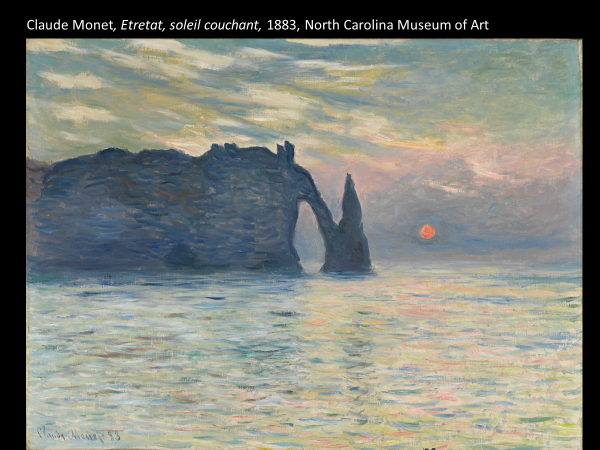
This remarkable piece of scenery was painted many times by Claude Monet, the French Impressionist, whose works, along with paintings by others such as Courbet, Daubigny and Boudin, have made this location a much visited tourist attraction. However, do not be tempted to take any pebbles of the beach as a souvenir. If caught you will be fined a 1000 euros!
However, Étretat’s reputation is not only based on the artists mentioned above, but is also a place of pilgrimage for vistors with an interest in literature. The famous French writer Guy de Maupassant (1850–1893) spent much of his childhood in the town and at Le Clos Lupin, can be found the home of author Maurice Leblanc, creator of the much-loved gentleman burglar Arsène Lupin…who might have got away with stealing a pebble or two off the beach!
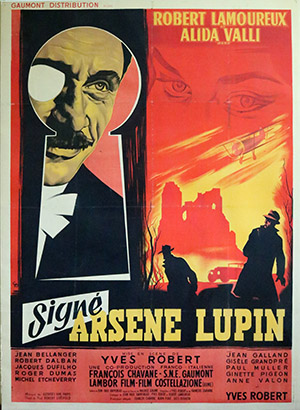
Appearing initially in a series of short stories by Leblanc, starting in 1905, Lupin has been the subject of numerous film, television and comic book adaptations. In Leblanc’s Lupin novel, The Hollow Needle (1909), much of the story centres on Étretat. The title relates to L’Aiguille (the Needle), the natural rock formation off the coast, where the secret treasure of the Kings of France is said to be hidden.
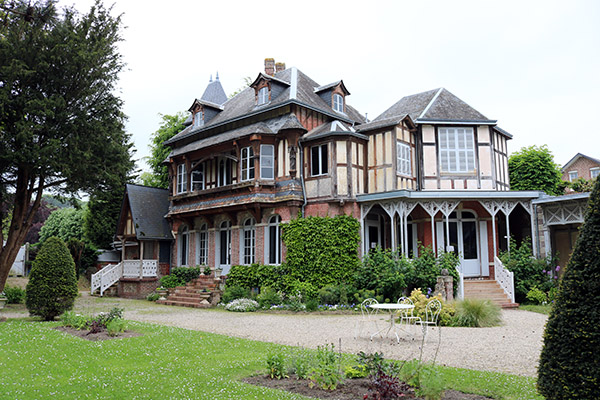
Le Clos Lupin, the home of Maurice Leblanc
Today, you can visit the fine 19th century villa once owned by Leblanc, now converted into a museum, and take part in your own detective mystery. Or, if you are not travelling to France in the near future and if you are lucky enough to have Netflix on your television, you could always watch Netflix’s Lupin, a thrilling action series set in the present day and inspired by Maurice Leblanc’s original literary character.
This month’s Live Lecture sees us back in England. To be precise, in Oxford.
Live Lecture for July
The Pre-Raphaelites in Oxford
Live Lecture to be given on Friday 21st July at 11am and repeated in the evening at 7pm BST
Oxford holds a special place in the history of the Pre-Raphaelite Movement. The young Millais made frequent trips to Oxford initially to visit his older half-brother, Henry Hodgkinson; his fiancé Mary modelled for Millais first Pre-Raphaelite work, Isabella and Lorenzo (1849). His mother’s first marriage to the Southampton brewer Enoch Hodgkinson had produced two sons, as well as providing Millais with independent means. As the ethos of the Pre-Raphaelites demanded painting directly from nature, Millais took lodgings in Botley during the summer of 1850 so that he could work on a woodland setting for his painting The Woodman’s Daughter. He was joined by his friend Charles Allston Collins, brother of the famous novelist Wilkie Collins. Legend has it that while in working in Wytham Woods, they encountered Thomas Combe, then superintendent of the University Clarendon Press. Sympathising with their high church beliefs, Coombe and his wife Martha took the young ‘brothers in art’ under their wing.

Pen and ink sketch by Collins of an evening at the Combe’s House 1850, Ashmolen Museum.
Collins and Millais stayed with the Combes at their house in Oxford. Painting in their garden, Collins created his masterpiece Convent Thoughts (1851).


This painting together with Millais’s Return of the Dove to the Ark and Holman Hunt’s Converted British Family formed a triptych representing Faith, Hope and Charity. Combe also purchased Holman Hunt’s The Light of the World, probably the most famous biblical painting of the Victorian era. But you won’t find the painting in the Ashmolean Museum, which owns the bulk of the Combe collection. Martha Combe bequeathed that to Keble College, where it can be seen in a purpose built chapel.
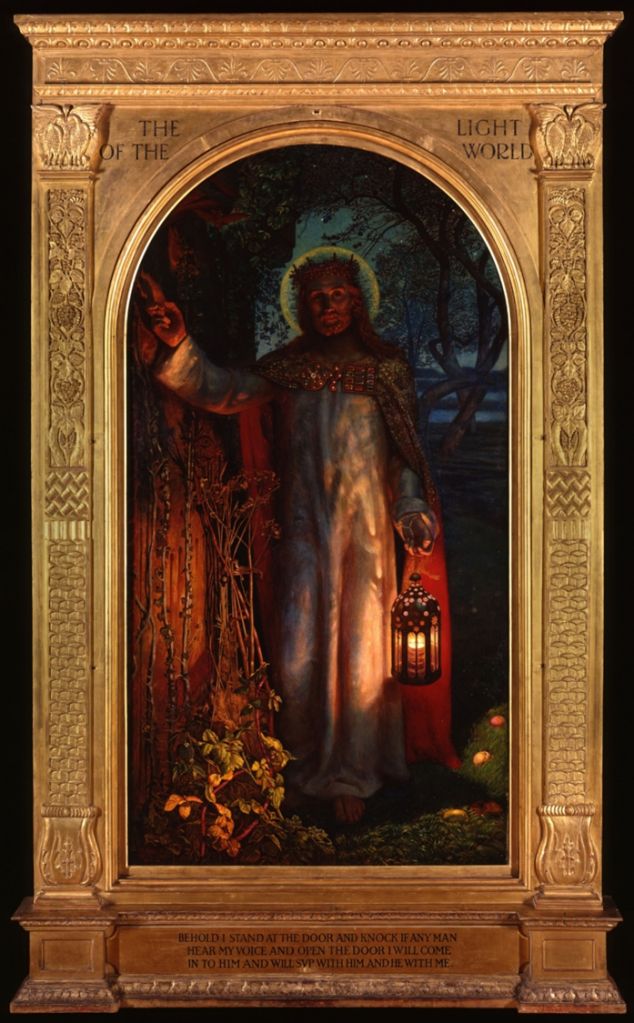
Oxford was also central to the emergence of the next generation of Pre-Raphaelites. While William Morris and Edward Burne-Jones were studying at Exeter College, they visited an exhibition at the Old Town Hall. Here they saw Millais’s Return of the Dove to the Ark and Collins’s Convent Thoughts. Burne-Jones set off for London to attend the Royal Academy Exhibition. Seeing Holman Hunt’s, Awakening Conscience and The Light of the World, made a profound impact. While Morris opted to pursue a career as an architect, entering the Oxford offices of George Edmund Street, Burne-Jones sought out Dante Gabriel Rossetti as a tutor. The summer of 1857 found them back in ‘City of Gleaming Spires’ to paint murals in the new Oxford Union debating hall. Rossetti, Burne-Jones, and Morris were joined by four other artists, in effect creating a Second Brotherhood. It was a portentous moment, as Jane Burden was spotted by the artists at an Oxford theatre and was drawn into the Pre-Raphaelite circle as a model. Although she married Morris, she may have already been in love with Rossetti. But that is a story for another time.

The Pre-Raphaelites in Oxford
Given live on Friday 21st July 2023 at 11am and repeated at 7pm BST
How to Book
The lecture will be delivered live by Zoom. It will be uploaded afterwards to my YouTube channel, and you will be provided with a private link to view it again at your leisure.
The lecture lasts for around an hour.
As the lectures will be delivered live by Zoom, you will be able to ask your questions in person at the end. You can also use the ‘Chat’ function.
I will be repeating the morning lecture in the evening of the same day for those people unable to make the morning slot. Please indicate which time slot you would prefer, morning or evening, as the lecture will have a different zoom code.
The lecture costs £10.
To book please email Susan Branfield at susanbranfield77@gmail.com
Please note Susan’s new email address as above
You can pay by cheque or BACS (details will be supplied). Cheques should be made payable to Anne Anderson.
Once you register and pay, you will be sent a separate email with your link. You will need this link to access the lecture on the day so please do not delete it.
After the lecture you will be sent another private link so you can access the lecture on my YouTube Channel.
Or you can pay directly through PayPal
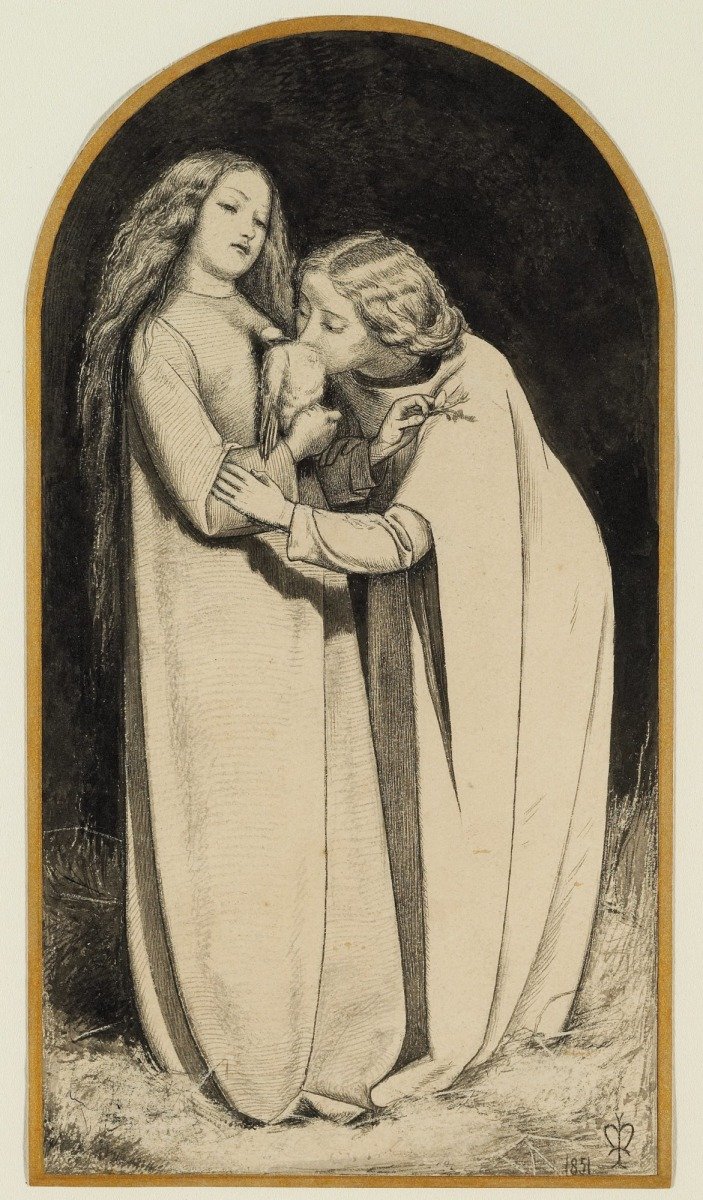
Oxford and the Pre-Raphaelites
One lecture Oxford and the Pre-Raphaelites
£10.00
Please join me to learn more about the Pre-Raphaelite story!
What’s New on the Channel
Why not have a look at what’s just been released on our free access channel:
Anne Anderson Art and Design History Channel on YouTube.
Evelyn De Morgan Artist
Evelyn De Morgan (1855 – 1919) née Pickering, was a painter who became one of the most accomplished artists of her generation. She defied the expectations of her class and gender studying at the Slade School of Art, adopting a style of painting much influenced by the works of Edward Coley Burne-Jones, and creating a place for herself as a Romantic and Symbolist painter. She had strong connections with later Pre-Raphaelitism through her uncle, artist John Roddam Spencer Stanhope. She met William De Morgan, ceramicist and friend of William Morris, marrying him in 1887. The profits from sales of her work helped to financially support her husband’s pottery business; she also actively contributed ideas to his designs for ceramics.
Travel Editions Tours
Some information for those of you who are interested in the art and heritage tours, in the UK and/or abroad, that Scott and I undertake through the Travel Editions company. Following a successful series of UK tours in 2022,Travel Editions is running an interesting range of tours this summer and autumn. Below are listed some of our tours scheduled for later this year, that might be of interest to you.
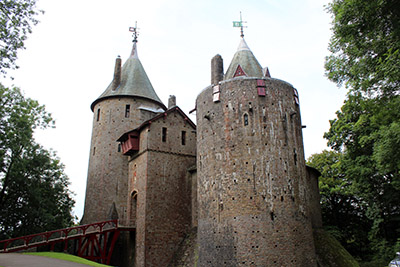
Gothic Castles to French Impressionism, 14 – 16 August (based in Cardiff)
It was a love of Gothic Revivalism that bought the 3rd Marquess of Bute together with architect William Burges to sumptuously remodel Cardiff Castle and create the Neo-Gothic fairytale Castell Coch in the late 1800s, a main and unique feature of your visit to Cardiff. The tour also looks at the magnificent French Impressionist art collection, one of the most important private collections in Britain, formed by the Davies sisters and housed in the National Museum of Wales.
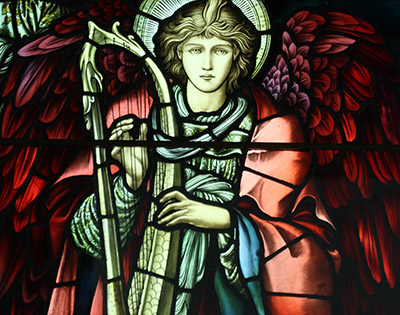
Pre-Raphaelites in Yorkshire Tour, 6-8 September (based in Harrogate)
Anne Anderson is one of the country’s leading experts on the Pre-Raphaelites and the Arts & Crafts Movement in the UK and has led a host of tours for us over many years. For 2023, her latest tour turns its attention to Yorkshire, home to some of the finest examples of William Burges’s architecture and design. On this tour – with both Prof Anne and Dr Scott Anderson – find out how a fatal kidnapping led to the building of one of England’s most interesting churches and explore the work of William Burges, whose Gothic Revival style echoed the works of his Pre-Raphaelite friends and peers. During the tour, there will also be the chance to see some fine stained glass by Morris & Co. An added bonus is a guided tour around Newby Hall, one of the finest country houses in Britain. Lectures by Prof Anne Anderson, with her customary wit and enthusiasm, will offer depth and context to the visits.
Art Nouveau and Art Deco in Manchester, 11-14 September (based in Manchester)
This fantastic tour looks at the wonderful architectural world of Art Nouveau and Art Deco through the prism of Manchester, with enthusiast and expert, Prof. Anne Anderson. As with so many other cities around the world, fuelled by the golden age of Hollywood and mass cinema and theatre attendances, Manchester was one of the UK cities that embraced Art Nouveau and Art Deco with the most vigour, leaving a legacy of outstanding buildings, which have survived the post-war building boom, both in the city centre and outlying suburbs. From civic and commercial buildings to churches, cinemas and galleries, Anne will take you on an inspirational journey back to the heyday of Art Nouveau and Art Deco a century ago.

| Nancy and the Birth of Art Nouveau Tour, 20-23 October (based in Nancy, France) The stately town of Nancy – a model of 18th century town planning – enjoyed a second golden age at the turn of the 20th century, when glass maker Emile Gallé founded the Ecole de Nancy, which typifies the Art Nouveau movement in France. This tour explores the history and rich legacy of this productive period with the city’s wonderful collection of Art Nouveau art, ceramics and architecture, in the company of expert and enthusiast Prof. Anne Anderson or Dr. Scott Anderson, with a series of lectures and visits from your base in the heart of the city just 200 metres from the magnificent Place Stanislas, one of the great squares of Europe. |
| For further details on these and other tours, please visit the Travel Editions website: https://www.traveleditions.co.uk to check booking details etc. |

Your Thoughts
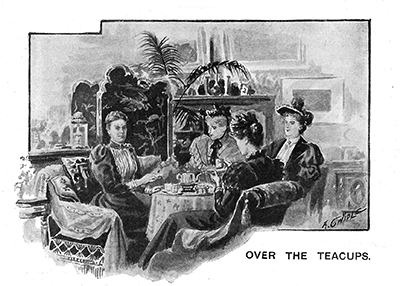
Like these Ladies who were enjoying a chat over tea way back in 1895, the Art History With Anne Team frequently discuss ideas on future content for both our Live Lecture program and the monthly Newsletter. While we rarely seem to run out of new plans for talks and features, we thought it might be appreciated if we asked you, as an individual, if you have any areas on art and design history that you might like to us cover in our programming.
Please do send us an email to: anne.anderson99@talk21.com or scott.anderson1949@hotmail.com explaining your thoughts and suggestions for investigations that we might look at for future sessions for you.
Further Information
| If you know anyone who would like to receive the Art History with Anne Newletter, please ask them to email anne.anderson99@talk21.com with the subject line: ‘Please add me to your mailing list’ Anne Anderson Art and Design History Channel For a selection of some of my free access lectures please visit my YouTube channel via Google by typing into the search box: Anne Anderson Art and Design History Channel Thanks to all of you who have watched films on the Anne Anderson Art and Design History Channel and particularly to those who have remembered to press the SUBSCRIBE button beneath the video window. It does not commit you to anything but helps with my stats. Thank you. Please email this Newsletter to a friend either in the UK or Abroad |